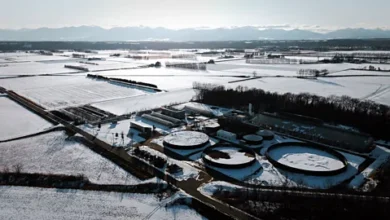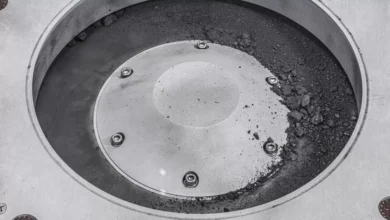The liquid air alternative to fossil fuels
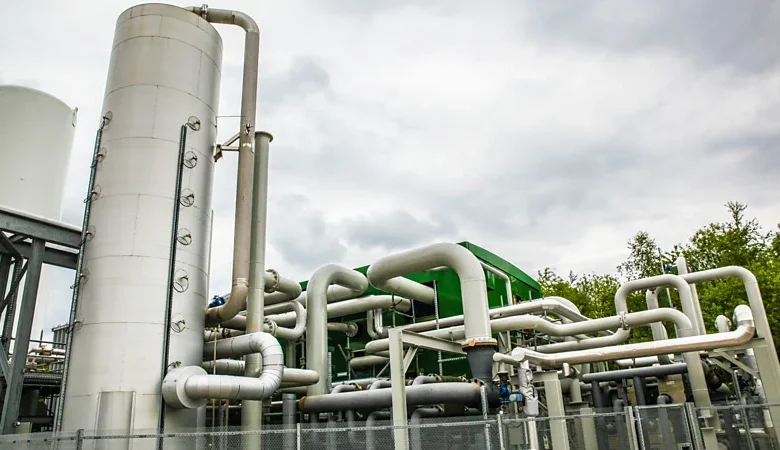
An overlooked technology for nearly 50 years, the first liquid air energy storage facility is finally set to power up in 2026. It’s hoping to compete with grid-scale lithium batteries and hydro to store clean power, and reduce the need to fall back on fossil fuels.
As the world’s use of renewable electricity soars, surpassing coal for the first time, the need to store that energy when the Sun isn’t shining and the wind isn’t blowing is growing in step. While some turn to grid-scale lithium batteries and others to pumped hydro, a small but growing industry is convinced there’s a better solution still: batteries that rely on air.
Near the village of Carrington in north-west England, the foundations are being laid for the world’s first commercial-scale liquid air energy storage facility. The site will eventually become an array of industrial machinery and a number of large storage tanks, filled with air that has been compressed and cooled so much it has become a liquid, using renewable energy surplus to demand. The stored energy can be discharged later when demand exceeds supply.
If the project succeeds, more will follow. The site’s developers Highview Power are confident that liquid air energy storage will make it easier for countries to replace fossil fuels with clean renewable energy – though at present, the technology is expensive. But as the need for clean energy storage surges, they’re betting the balance will tip in favour of liquid air.
The intermittency problem
Switching to renewable energy is essential if the world is to cut greenhouse gas emissions and avoid the worst impacts of climate change. But doing so poses challenges for electricity grids.
Power plants that burn fossil fuels like coal and gas can be turned on and off largely at will, offering a predictable supply of electricity that can be matched to demand. In contrast, renewables are intermittent. This means there is sometimes there isn’t enough electricity being generated, risking power cuts, and sometimes there is too much – such as on very windy days – which could damage the grid.
A big part of the solution is to store the surplus energy so that it can be released when it’s needed. This helps ensure a reliable supply and minimises the risk of damage to the grid. As renewable use has ramped up, it has become increasingly important to build up grid-scale storage capacity, says Shaylin Cetegen, a chemical engineer at the Massachusetts Institute of Technology (MIT), who studies energy storage systems.
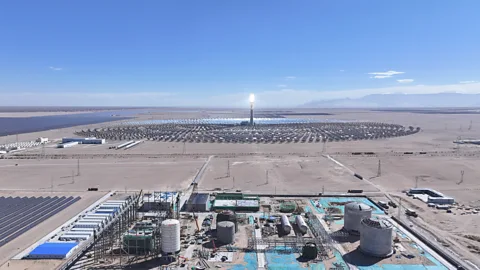
For decades, the main form of energy storage has been pumped hydro. Surplus electricity is used to pump water uphill, where it sits behind a dam. When energy is needed, the water is allowed to flow through turbines, generating electricity. In 2021, the world had 160 gigawatts of pumped hydro capacity.
More recently, as demand for energy storage has risen, large-scale battery storage systems have been built. This is happening quickly, and accelerating. According to the International Energy Agency, grid-scale battery storage grew from 1GW in 2013 to over 80GW in 2023, with over 40GW added in 2023 alone.
The liquid air solution
Liquid air energy storage, by contrast, is a relatively new technology on the block. The basic idea has been around since 1977, but it received little attention until this century.
The process works in three stages. First, air is taken in from the surroundings and cleaned. Second, the air is repeatedly compressed until it is at very high pressure. Third, the air is cooled until it becomes liquid, using a multi-stream heat exchanger: a device that includes multiple channels and tubes carrying substances at different temperatures, allowing heat to be transferred between them in a controlled way.
“The energy that we’re pulling from the grid is powering this charging process,” says Cetegen.
When the grid needs extra energy, the liquid air is put to work. It is pumped out of storage and evaporated, becoming a gas again. It is then used to drive turbines, generating electricity for the grid. Afterwards, the air is released back into the atmosphere.
There are a few neat energy-saving tricks along the way. For instance, gases under high pressure get hotter, so the processing of compressing the air generates heat. This heat can be used to help restore the liquid air in the second half of the process. “Without these thermal recovery cycles, the efficiency of the process is closer to 50%, but when we implement this, we can get over 60%, approaching 70% efficiency,” says Cetegen.
The challenge is to roll out enough liquid air energy storage to meaningfully accelerate the green transition.
A grid-scale stop-gap
The new plant at Manchester is the first commercial-scale endeavour in the world. It’s being built by Highview Power, which has been developing liquid air energy storage for 20 years. It follows a demonstration plant at nearby Pilsbury. The Carrington plant will be able to store 300 megawatt-hours of electricity, enough to plug a short gap in power for as many as 480,000 homes.
It will come online in two stages, says chief executive officer Richard Butland.
In August 2026, the turbine is set to begin operating. This will not generate electricity, but will help to stabilise the electricity grid. At present, says Butland, the grid operators are sometimes turning on gas-fired power plants to stabilise the grid. “It’s a huge cost to the system,” he says. By offering an alternative means of stabilisation, “we can stop them doing that”.
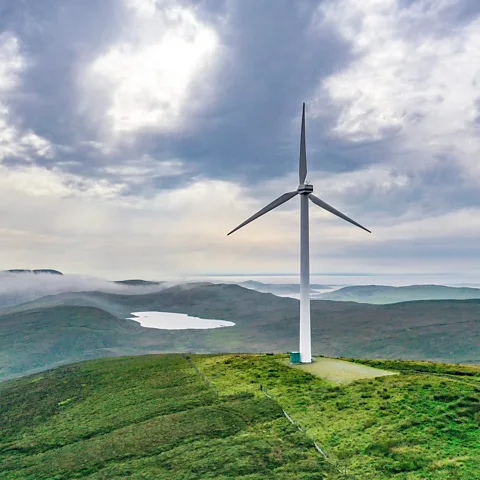
Then in 2027 the liquid air storage is expected to begin operating. Highview intends to make money by selling electricity to the grid when it is most needed.
The bottom line
While energy storage is an essential technology, the economics are challenging, says Cetegen. In a study published in March, she and her colleagues assessed how feasible liquid air energy storage would be in 18 regions of the US. They compared eight different decarbonisation scenarios, with varying uptake of renewables. In all cases, they estimated how much money a project could make by buying and selling electricity over a 40-year lifespan.
Under the most aggressive decarbonisation scenario, liquid air energy storage was viable in Florida and Texas, but nowhere else. “We didn’t observe any economically viable systems under the other decarbonisation scenarios,” says Cetegen.
While this could be naively seen as “a negative result”, says Cetegen, she emphasises it does not mean liquid air energy storage is a bad idea. For starters, her methods were deliberately conservative, and her study found other forms of energy storage like pumped hydro and batteries were even less economically viable. More to the point, the biggest issue was that storage facilities could not make much money in their early years, because there weren’t enough renewables on the US grid to drive up price volatility. “The system wasn’t getting used a lot in the early years [of the model],” she says.
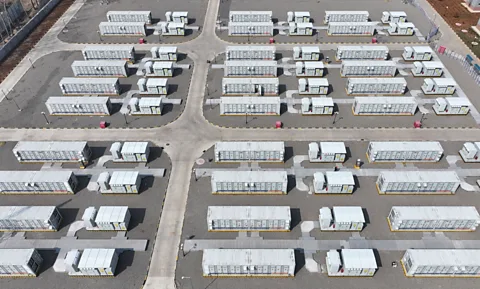
Providers of liquid air energy storage could wait a few years until renewables drive up price volatility, but doing so would impede the energy transition, says Cetegen.
Instead, she says governments could support the technology. In her study, subsidising the initial capital costs to set up the systems “could be a viable approach to achieve economic viability in the short term”, she says.
Furthermore, faster uptake of renewables would increase energy price volatility, making energy storage more economically viable.
The plan for global roll-out
Highview Power don’t seem concerned. “Manchester will make very good returns,” says Butland. They have been aided by a UK government policy called a “cap and floor”, which guarantees the company a minimum return on capital. This gave investors confidence, Butland says. However, he adds it shouldn’t cost the government a penny. “They’re expecting every project to make more than the minimum,” he says, “so the government doesn’t expect to have to pay out on it”.
And the company has plans for two additional UK plants, plus more in Japan and Australia. These will be much bigger: while the Carrington plant will store 300MWh, the Scottish one will be almost 10 times larger, capturing 2.5GWh. While compressors and cooling machinery are expensive, storage tanks are cheap, so it’s easy to scale up.
Cetegen makes a final point in favour of liquid air energy storage: it’s cheap. Energy storage technologies are often assessed using a metric called the “levelised cost of storage”, which estimates how much each unit of stored energy costs over the lifespan of the project. For liquid air, this can be as low as $45 (£34) per megawatt-hour – compared to $120 (£89) for pumped hydro and $175 (£130) for lithium-ion batteries.
Carbon Count
The emissions from travel it took to report this story were 0kg CO2. The digital emissions from this story are an estimated 1.2g to 3.6g CO2 per page view. Find out more about how we calculated this figure here.
“While none of these storage methods are likely economically viable right now without policy support, liquid air energy storage stands out as a particularly cost-effective option for large-scale storage,” Cotegen says.
Ultimately, Butland expects electricity grids to rely on a mix of storage technologies. Pumped hydro is extremely effective and works for decades, but it’s location-dependent because it needs a water supply. Meanwhile, batteries are highly efficient and can be placed anywhere, but need to be replaced after about 10 years. Liquid air has the advantage that it can store energy for longer than batteries, with minimal losses.
As any country enters the green transition, its electricity grid needs to be remodelled to cope. “We’re rebuilding all grids globally, based on new generation,” says Butland. And that could well mean a lot of liquid air energy storage.
